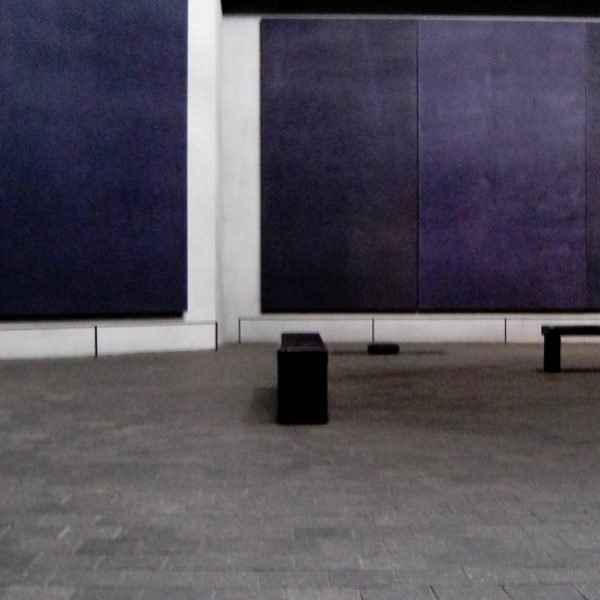Architecture and Religion, or the Sacred, or the Spiritual
 The idea of the ineffable in architecture was first developed at Le Corbusier’s Ronchamp Cathedral; to many, it is the ultimate symbol of religion’s representation in modernist architecture. Ronchamp’s undulating and unregulated windows and walls address the emotional elements of religious experience. Concrete is molded and shaped to form almost sensuous shapes which are textured and create different entrances and alcoves. The walls are punctured with windows which adhere to no typical organization, occupying different spaces all along the walls of the main section of the sanctuary. Perhaps most notable is the manner in which the roof of the structure does not sit solidly on the walls; instead it leaves a line of light that traces throughout the whole building.
The idea of the ineffable in architecture was first developed at Le Corbusier’s Ronchamp Cathedral; to many, it is the ultimate symbol of religion’s representation in modernist architecture. Ronchamp’s undulating and unregulated windows and walls address the emotional elements of religious experience. Concrete is molded and shaped to form almost sensuous shapes which are textured and create different entrances and alcoves. The walls are punctured with windows which adhere to no typical organization, occupying different spaces all along the walls of the main section of the sanctuary. Perhaps most notable is the manner in which the roof of the structure does not sit solidly on the walls; instead it leaves a line of light that traces throughout the whole building.
Though the idea of ineffable space was created directly in reference to Ronchamp, the questions of their connections can always be reexamined. What is the ineffable space, or the plastic emotion? Constructing the Ineffable: Contemporary Sacred Architecture, edited by Karla Britton, takes the question of the ineffable far beyond these roots. Many scholars raise questions and buildings to further investigate the intersections of architecture, religion, modernism, and sacred space.
Reading the many contributions, it becomes clear that the intersections of architecture and religion are so fascinating to interpret because in many ways the questions about them are very similar. Understanding the ineffable can only take you so far, as a number of terms and practices related to building and religion are required to navigate the widely divergent opinions on these very terms and practices. For some, the sacred is limited to a religious context, while others see it in a variety of contexts. Each writer takes a different tack when examining the contemporary sacred architecture named in the title. Ultimately, we are asked to consider the immense power of religion and its architecture over daily life in multiple faiths, and how that design reciprocally reflects on religious practice.























